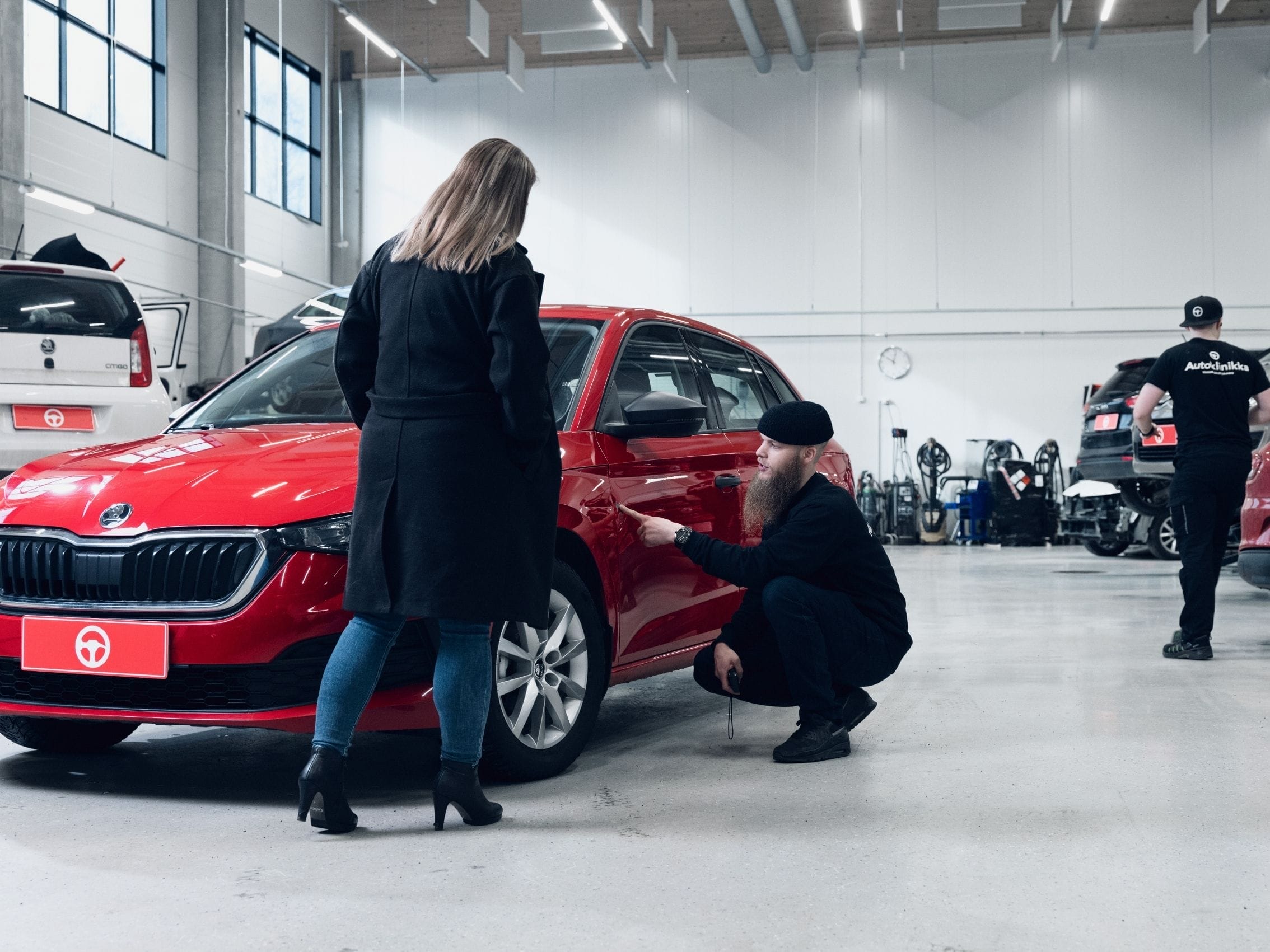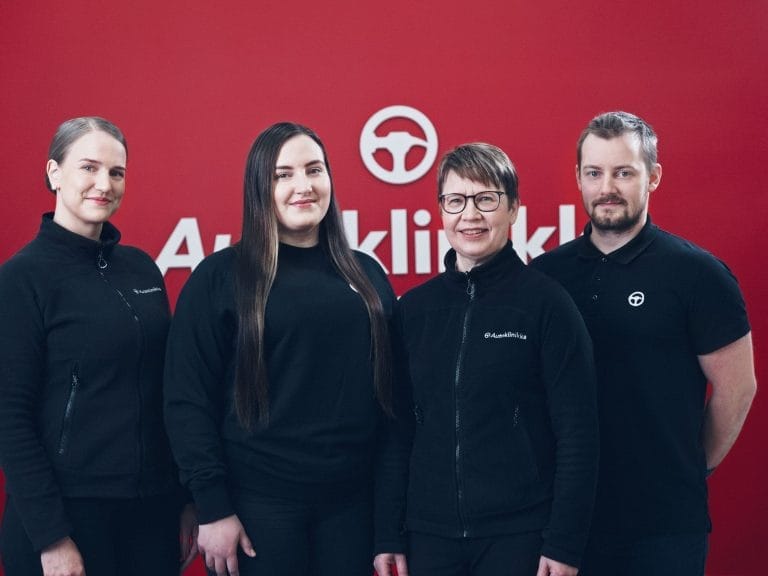
Damage inspection
Damage to the car must be inspected before any repairs begin. This is known as a damage inspection. During the inspection, we determine what needs to be repaired, how long it will take and how much it will cost. A damage inspection at Autoklinikka is free of charge.
You can do the damage inspection online by sending us photos of your car’s damage, or by visiting one of our sbody shops. After the inspection, we’ll schedule a repair appointment for your car and forward all necessary information to your insurance company.
Partner of all insurance companies







Take care of the damage inspection with photos 24/7

You can also complete a bodywork or collision damage inspection using your phone by sending us photos of the damage to your car online.
This means you don’t have to drive to a repair shop for a damage inspection. You’ll get an estimate for the repair work quickly.

Filing a claim with your insurance company
To process a claim for collision or bodywork damage, your insurance company needs to know what happened and when. This notification is called an insurance claim.
You can also file the insurance claim after the damage inspection, once your car has been assessed at Autoklinikka.

You can pay the excess or repair costs in instalments
At Autoklinikka, we offer flexible payment options for your insurance excess and bodywork or collision repair work.
When you choose to pay in instalments, you will always get at least 30 days of interest-free payment time, and you can decide the appropriate payment period.
Our customer satisfaction
9,44
Average customer feedback
88,13
NPS index
Answers to frequently asked questions
Autoklinikka is a sustainable choice
We take the environment into account in everything we do. We don’t replace parts unnecessarily, and we repair everything that can be repaired. We sort and recycle all old parts appropriately and carefully.

In particular, we aim to reduce our environmental impacts by:

Contact us
